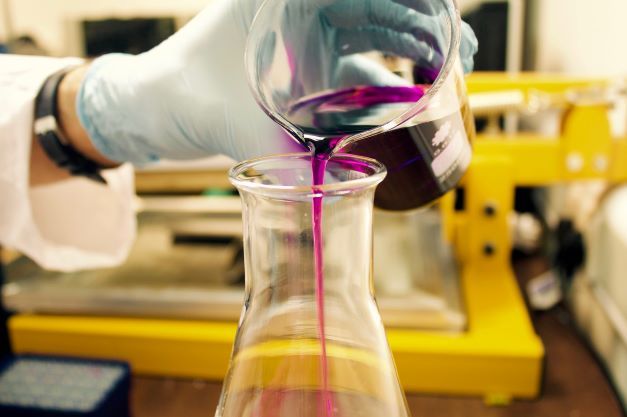Better drugs with so-called "click chemistry"
The advantages of the tried and true "click chemistry" method, for which three scientists were given the 2022 Nobel Prize in Chemistry.

To provoke a specific and novel chemical reaction by joining two molecules together -as if they were Lego pieces, some have protrusions and others have holes- is possible with the so-called "click chemistry", a technique consolidated in 2008 to create new molecules of the pharmaceutical interest and new materials.
The winners of the Nobel Prize in Chemistry 2022 were scientists Carolyn R. Bertozzi, from Stanford University, in the United States; Morten Meldal, from the University of Copenhagen, in Denmark; and, for the second time, K. Barry Sharpless, from the Scripps Research Institute, in the USA, popularized it and today it is used in various laboratories around the world, including UNAM, said Arturo Jiménez Sánchez, a researcher at the Institute of Chemistry (IQ) of the National University.
In the remote media conference "The Nobel Prize in Chemistry 2022, a sample of making difficult processes easier", Jiménez Sánchez recalled that 25 years ago professors Meldal and Sharpless had conceptualized "click chemistry". And Professor Carolyn Bertozzi, in about 2000, incorporated a small branch called bioorthogonal chemistry.
They represent a class of high-throughput, very efficient chemical reactions that proceed rapidly and selectively under relatively normal conditions so that they can be used in a biological environment, that is, without undergoing side reactions, unwanted, with endogenous functional groups, that is, chemical entities that are present and part of cellular metabolism.
"Click chemistry" is used to perform, in real-time, and visualize, with the help of optical microscopy, various reactions, for example, of sugars in the membranes of each epithelial cell of a zebrafish model, with which Bertozzi verified the efficiency of the technique.
It's any reaction between two molecular entities that may not need a lot of energy to be achieved. It should be a fast and highly efficient reaction, that is, where there will be no by-products, and if there are any, they can be very easily removed from the system, that is, it is a reaction that tends to simplify.
Juan Wolfgang Zinser Sierra, a medical oncologist from the Graduate Studies Division of the UNAM School of Medicine, indicated that this technique contributes to medicine in the way it joins molecules, altering them least possibly; it allows creating of medicines and improving some existing ones, for different diseases, including cancer.
Being able to join molecules has allowed the creation of some drugs where what is done is to take a drug that is already known to be useful for certain cancer, but seeking greater selectivity and to be more specific in the attack on the cell, in the destruction of the cell without damaging other organisms, is to be able to make this union of the drug more specific in the tumor cell.
In this technique the molecules are joined in an easy way, similar to Lego pieces; thanks to it, conjugated drugs are created, more concentrated in the cells. In addition, anticoagulant drugs and drugs for infections were created. It is also used in the development of new materials and stressed the importance of visualizing chemical laboratory processes with the help of optical microscopy.




